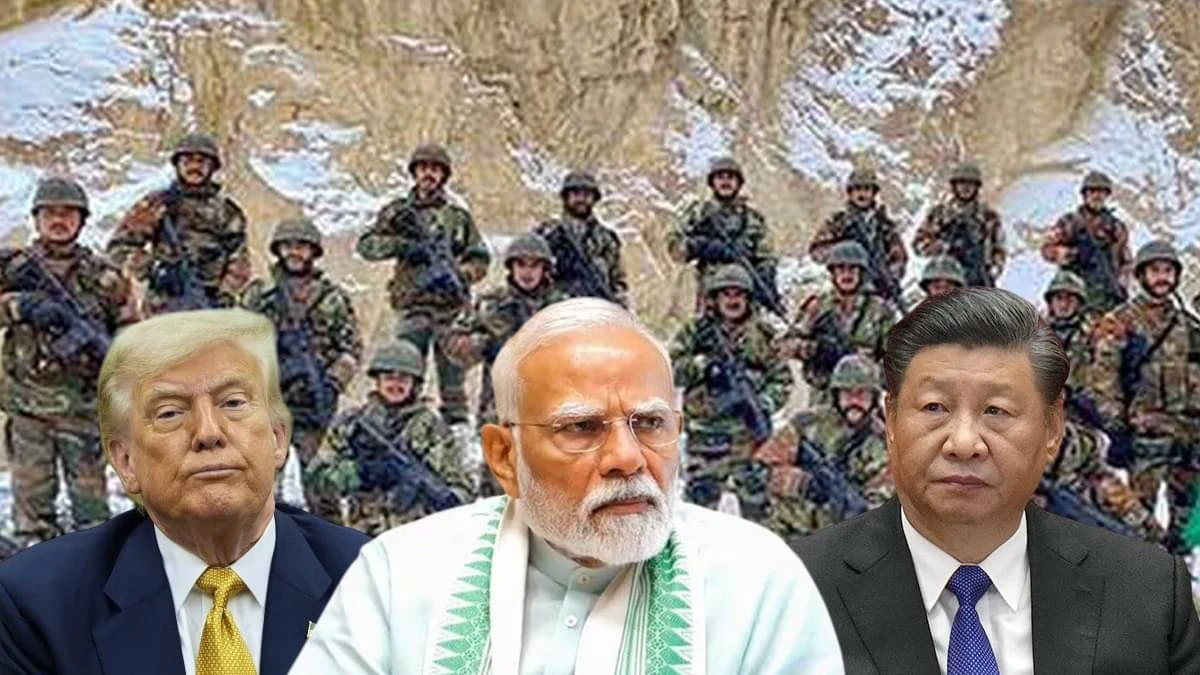WITH India-US relations facing Trump headwinds, some in New Delhi are looking for strategic smarts in swinging with Xi Jinping – pun intended.
This could be a geopolitical mistake with costs to pay.
It is variously being called a reset of ties, or even a realignment aimed at sending a geopolitical message to America. These experts have already forgotten the Wuhan reset. Prime Minister Narendra Modi had invested considerable political capital in building the China ties since coming to power. It was a mix of audacity and statesmanship to revive the CHINDIA narrative at the risk of ballooning trade deficit.
Yet the Beijing copybook did not change. Conduct of Beijing in the past six months alone is proof that any attempt to look at the India-China relationship in a softer hue can be counter productive. Even as the respective bureaucracies hit the road to normalization following the Modi-Xi meeting in Kazan, Russia, last October, we had China putting a squeeze on DAP fertilizers supplies. While the rare earths disruptions were global, the fertilizer and tunnel boring machines restrictions were India specific, important for India’s food security and the border roads program respectively.
The lifting of the embargo on Monday notwithstanding, what the restrictions prove is that China would turn every chance into an opportunity for one upmanship. It would leverage every dependency to bargain.
China’s support to Pakistan’s military effort during Operation Sindoor only underscores Beijing’s strategic clarity on tying India down in its neighbourhood. The Pakistan axis has existed for over five decades now effectively becoming a muscle memory for the Chinese foreign policy establishment. As if to rub it in, Wang Yi decided to travel to Islamabad after his New Delhi pitstop.
China wants to maintain peace and stability in border areas. But if there was intent, the accent should have been on solving the boundary question and not to keep it festering like it has for decades. The sanctity of the Line of Actual Control (LAC) needs to be respected. But on the ground we have an Indian LAC and a Chinese LAC depending on perceptions on both the sides. These differing perceptions are at the root of Chinese military maneuvres every few years that now fall into the pattern of salami slicing.
The 2020 Galwan clashes became a trigger for a deep freeze in India-China ties due to the loss of lives of soldiers, something that had not happened since the 1967 Sikkim battle. But before that we had the Doklam stand off in 2017 at the tri-junction with Bhutan. In September 2014, when fresh from the hustings Prime Minister Narendra Modi welcomed Xi Jinping to his home state in Gujarat, PLA troops made the Chumar incursion. This was just two months after acknowleding that its soldiers had come into the Depsang plains in 2013 and were squatting since. And two years before that, in 2011, the Chinese came inside Chumar to destroy some Indian Army bunkers meant for winter watch.
Not that more evidence is needed, but during India’s Kargil war with Pakistan in 1999, the PLA forces made a foray into the Chip-Chap river in Sub Sector North (SSN). Though the Vajpayee government did not make an issue of it, focusing on evicting the Pakistani invaders instead, the fact remains that the Chinese are never shy of capitalizing on military opportunities.
The pattern is clear. Every few years China would create a kerfefle along the northern or eastern frontier, just to take India off balance. While Chinese readouts espouse that cooperation should not be held hostage to disputes, that’s exactly what China does itself.
That brings me back to the spin being given to India-China diplomacy under the Trump overhang. That this is some kind of realignment to hedge against a mercurial American president. Howsoever unpredictable, Trump term ends by 2028, third term MAGA caps in the White House gift shop notwithstanding. Soon there would be a new president and we can sit out the remainder of President Trump’s time in office.
In a competitive geopolitical combat with the United States, China sees in the present discomfiture of India with USA an opportunity to build back post Galwan. Typical commentary from China says cooperation should not be held hostage to disputes, solidarity within the Global South is a strategic necessity, and that a multipolar world order raises stakes of perpetual hostility. Nice.
But containing India is part of Beijing’s DNA. China remains an adversary with whom we must remain engaged to secure our borders and economic interests. Recent gestures only suggest cautious movement forward. As Deng Xiaoping famously said: feel the stones as you cross the river.
Postscript: A Grok translation of the Chinese read out of Wang Yi meeting with Jaishankar caused a midnight scare at the Jawaharlal Nehru Bhawan with one line reading ‘India recognized Taiwan as part of China.’ The MEA clarified Tuesday morning that there was no evolution in India’s position on Taiwan. And that we remain engaged with them on culture and trade, like we have always done. Like even China itself does despite all the bad blood. No change in position means that we do not recognize Taiwan as part of China, till we actually do. Which should be incumbent upon – if at all it happens – on a hard bargain over POK. The CPEC passes through Indian territory, and can continue to pass through Indian territory, even after India takes physical possession of POK.
